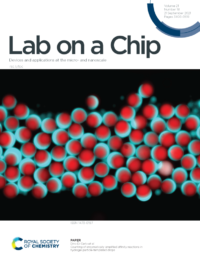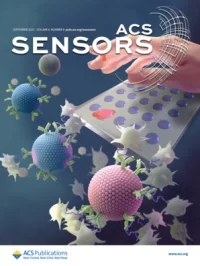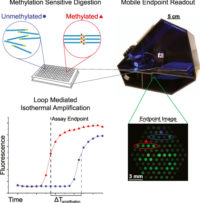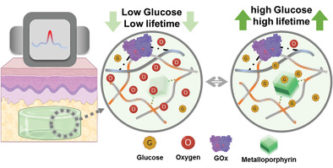Amplification Biochips and Implantable Bar-code Sensors
Thrust Leads
Goals: Thrust 1 will develop amplification biochips and implantable bar-code sensors for point-of-care (POC) monitoring of cardiovascular disease and diabetes biomarkers. There are two main projects for Thrust 1.
Project 1.1: Design and validation of cartridge-based assays and systems using microfluidics, paper fluidics, nanoparticles, and amplification
Project 1.1 is designed to be integrated with T2.1, namely the design and validation of mobile and cost-effective reader platforms to overcome key challenges and gaps in existing technologies toward developing the Lab in your Palm-engineered systems for cardiovascular and diabetes applications.
This project includes three tasks focused on the parallel development of (1) nanostructure-based biosensors, (2) cost-effective material-based biosensors, and (3) emerging biomarkers technologies.
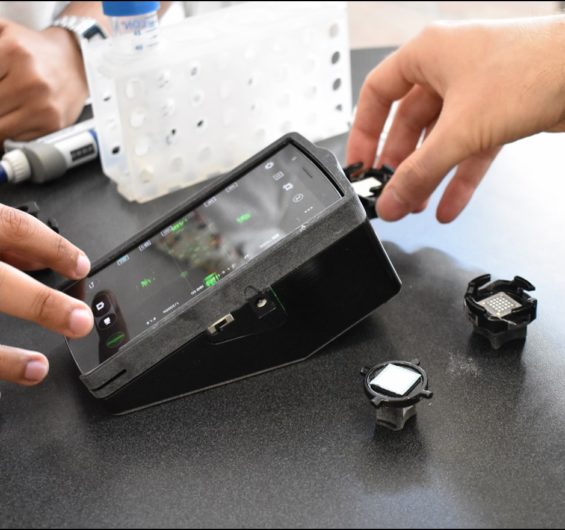
Thrust 1.1 Research Highlights
Lab on a Chip (2021)- Front Cover
Yilian Wang, Vishwesh Shah, Angela Lu, Ella Pachler, Brian Cheng, Dino Di Carlo
ACS Sensors (2020) – Front Cover
Ghulam Destgeer, Mengxing Ouyang, Chueh-Yu Wua and Dino Di Carlo
ACS Sensors (2021) – Editors Choice
Jacob Amos Hambalek, Janay Elise Kong, Calvin Brown, Hector Enrique Munoz, Thomas Horn, Michael Bogumil, Eleni Quick, Aydogan Ozcan, and Dino Di Carlo
Project 1.2: Design and validation of implantable systems including optimization of the transduction and recognition elements of the assay and development of biocompatible materials
T1.2 is designed to be integrated with T2 project 2 and T3 projects 1 and 3, to overcome the key challenges of the Lab on your Wrist implantable engineered system primarily for diabetes applications.
This project includes two main tasks focused on the parallel development of (1) biocompatible materials for encapsulating/packaging bio-sensing assays, and (2) multiplexed (“barcoded”) assays for monitoring multiple analytes with a single inserted device.
Mike McShane
Dino DiCarlo
Melissa Grunlan
Gerard L. Coté
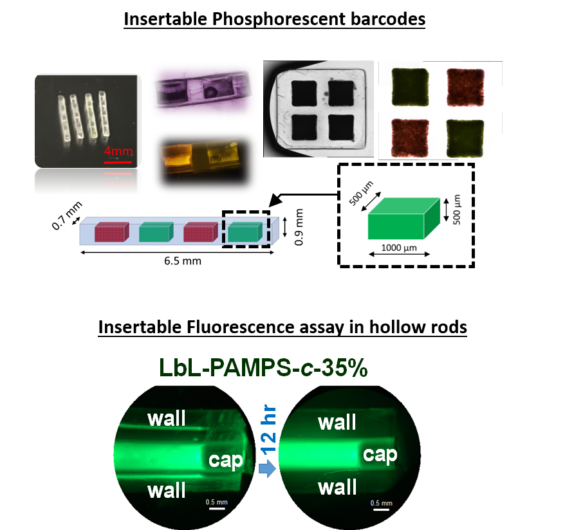
Thrust 1.2 Research Highlights
Macromolecular Rapid Communications (2022)
Ping Dong, Brian S. Ko, Kayllie A. Lomeli, Emily C. Clark, Michael J. McShane, Melissa A. Grunlan
ACS Applied Materials & Interfaces (2019)
Yil-Hwan You, Aniket Biswas, Ashvin T. Nagaraja, Jin-Ha Hwang, Gerard L. Coté, and Michael J. McShane
SPIE BiOS (2019)
Lydia E. Colvin, Ping Dong, A. Kristen Means, Melissa A. Grunlan, Gerard L. Coté










